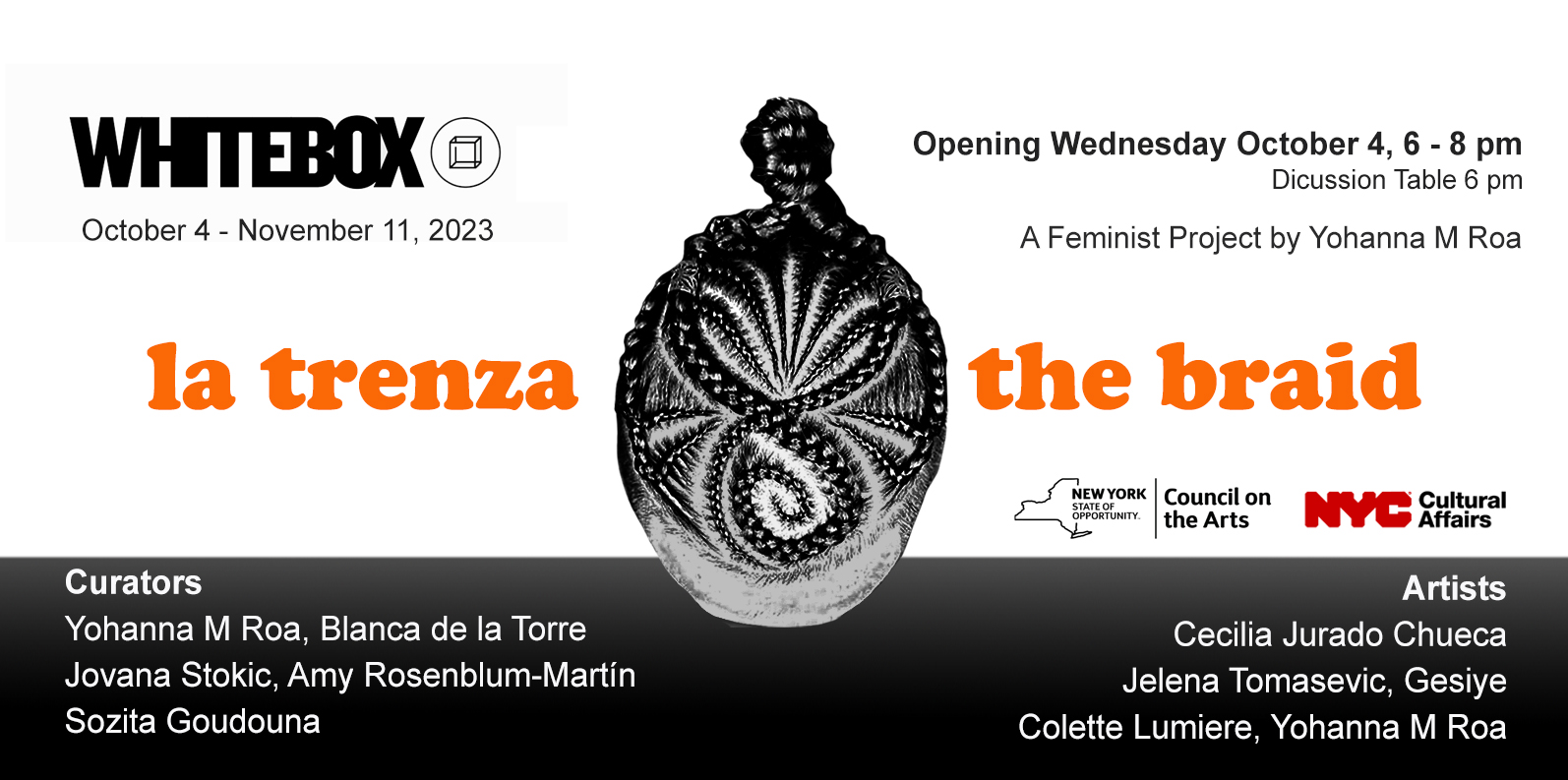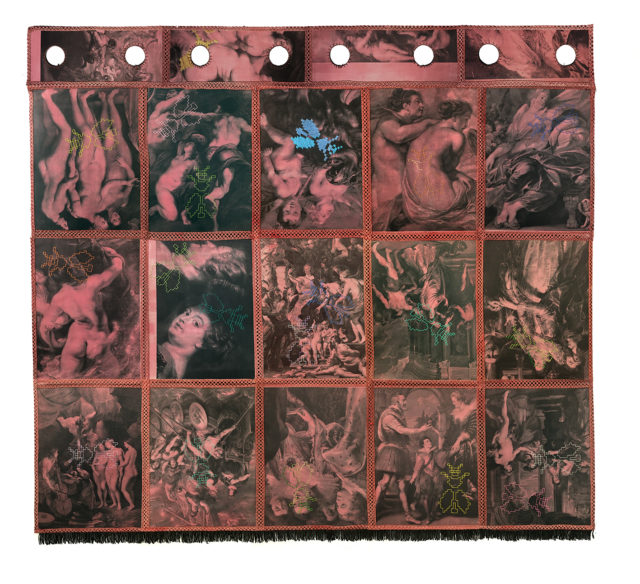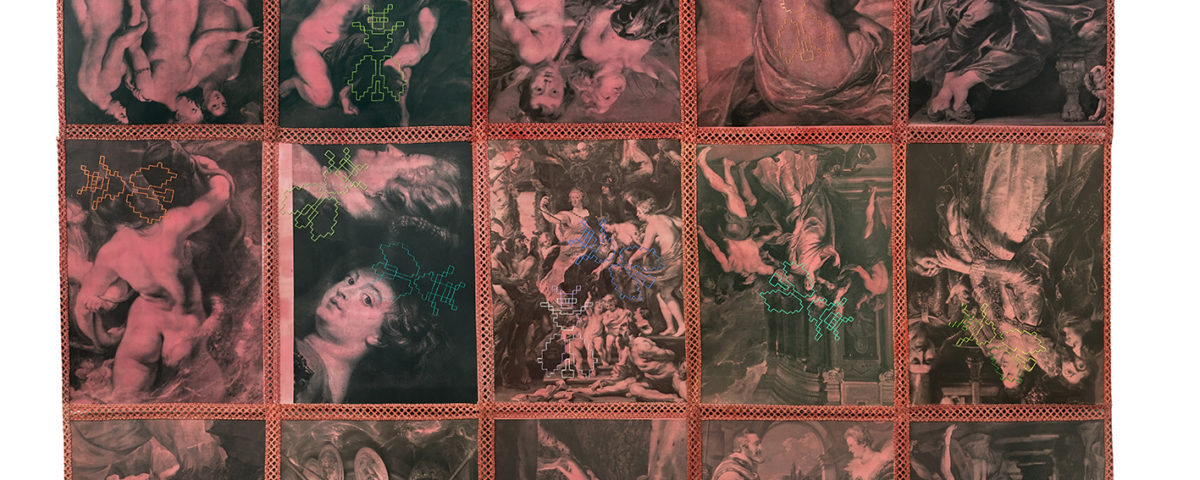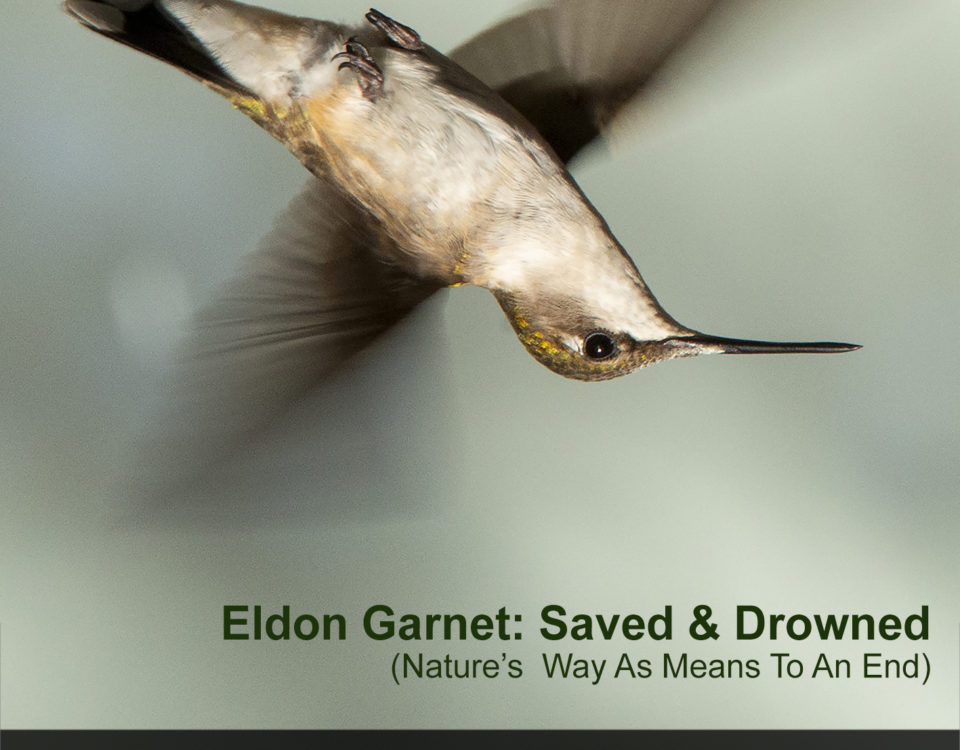
la trenza – the braid. Gesiye, Artist & Amy Rosenblum Martín, Curator
September 26, 2023
La trenza-The braid. Colette Justine, Artist & Sozita Goudouna, Curator
September 26, 2023
A Collective Feminist Curatorial
Yohanna M Roa Artist & curator

Curtain Pages from an art history book (Peter Paul Rubens) dyed with grana cochineal from Milpa Alta. Textile intervention. 51 x 60 inches
Cochineal Grana Curtain.
By Yohanna M Roa artist and curator
I proposed the first fold of the braid to Blanca de la Torre and she consequently worked with the artist Cecilia Chueca.
In emails shared with Blanca de la Torrea due to other projects and dialogue in NY, I considered it appropriate to start the braiding with my work "Cortina". I made this work in 2018 during an artistic residency in San Pedro Actopan - Mexico City, with the Calpulli Tecalco Organization south of the city. One afternoon, Fernando Palma (artist and brother of Angélica, the organization's director) went for a walk to Tehutli, a volcano in the area. Along the way, we found several crops of cactus; there, we took several white insects that covered the cactus, and by squeezing them with our fingers, they turned red "Cochineal Grana." Two aspects interest me about this work: the first is historical, and the second has to do with the production process of the scarlet color.
Historical
The grana cochineal is native to what is now known as the state of Oaxaca in Mexico. Before the arrival of the Spanish, in the Nahuatl language, it was called Nocheztli, which means “nopal blood,” and in Mixtec, Ndukun, which means “blood insect.” This pigment was the most exported from New Spain during the 16th century, after gold and silver. Many paintings that currently hang in museums worldwide were painted with this pigment, just as the costumes of kings and nobles were dyed. To a large extent, this seems to me to be a great example of extractivism, not only because of the name change but because of the massive exploitation study and process that was carried out. The Spanish crown retained a monopoly on this product throughout the colonial period. To do this, he kept the secret of its nature and production, preventing the live insect from leaving New Spain. When the Spanish referred to cochineal, they always used terms that referred to agriculture so that competitors from other nations would believe it was a plant product, a fruit of a plant, or a seed.
Feminism and production
Notably, it is the female that is sacrificed to produce the dye. In general, I was attracted by the tragedy that the same color that she used to defend her made her attractive to extract her. The female of this species, whose life cycle is three months, is the one that contains carminic acid, a substance that is synthesized as a dye. The insect uses this substance to defend against predators such as ants. For its part, the male does not require this defense since his vital colic is brief; it is reduced to a week in which he fulfills his reproductive function and then dies.



